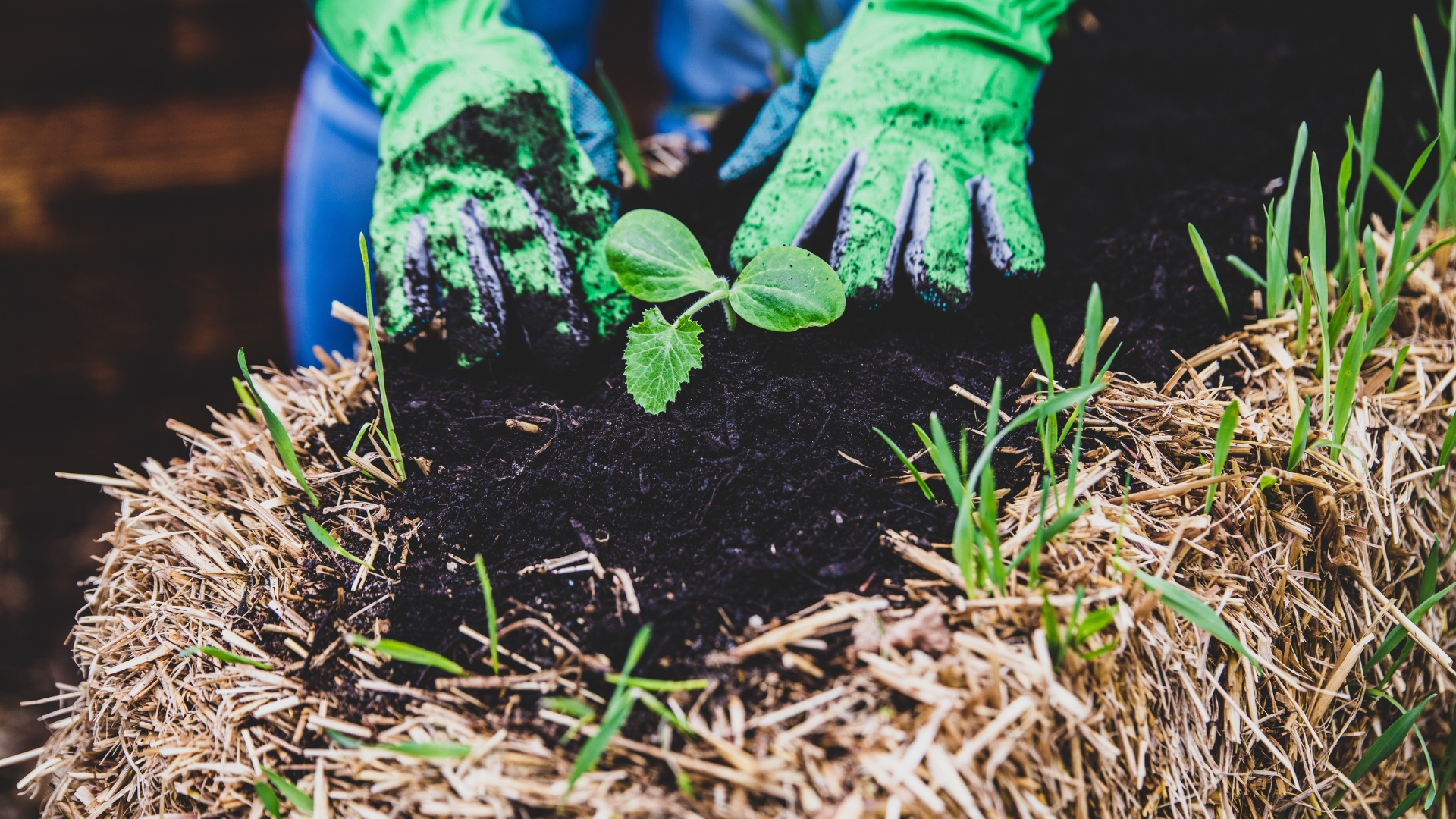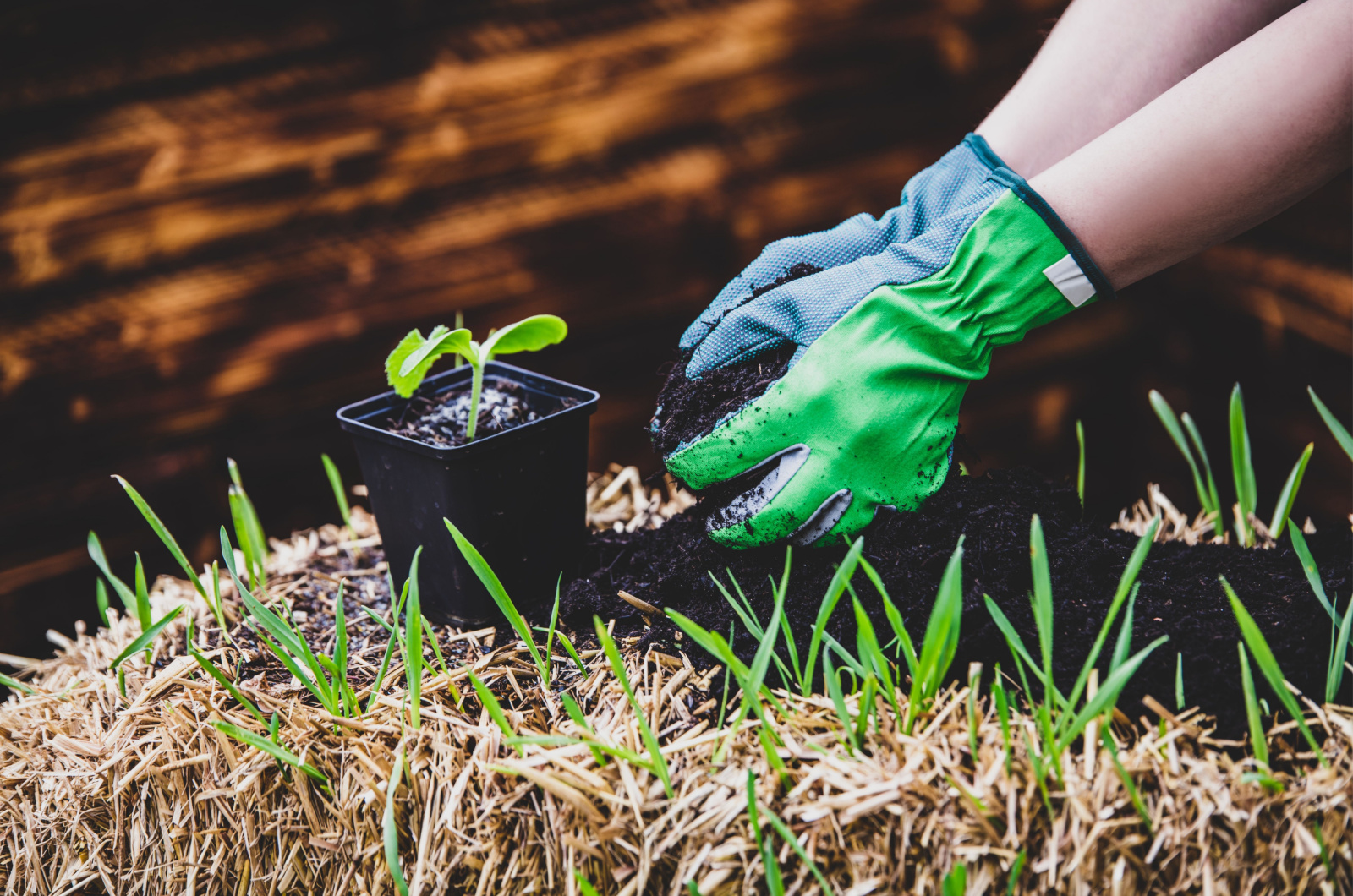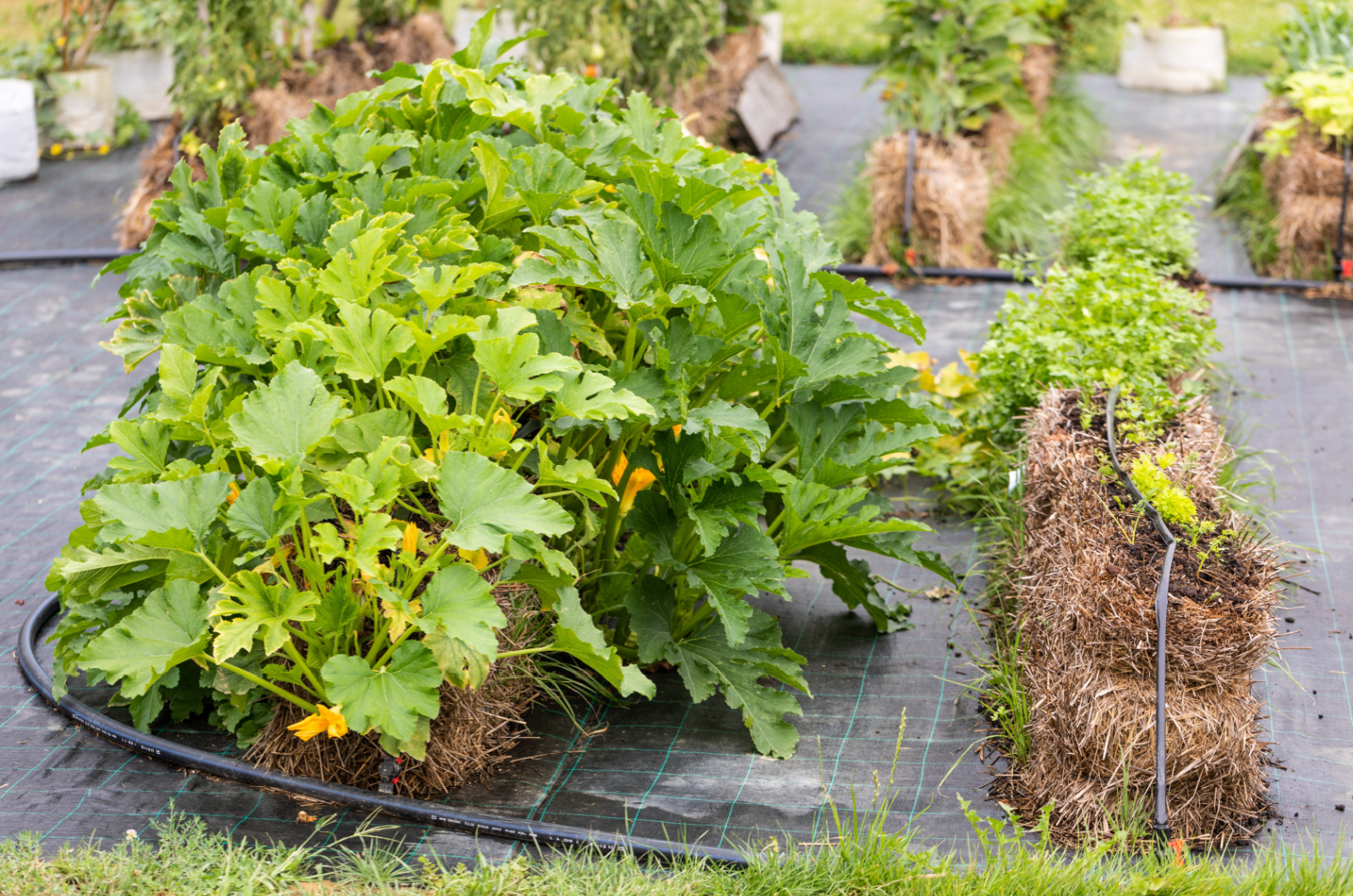Why stick to soil when you can rock the garden game by growing plants in straw bales?
Straw bale gardening is a unique method that turns ordinary straw bales into amazing growing environments for plants. It’s easy, versatile, and affordable, making gardening possible for everyone.
So, stick around to find out more about this creative approach and enjoy gardening on a whole different level!
The Advantages Of Straw Bale Gardening
• Bale is encouraged to compost and decompose quickly so it provides plants with necessary nutrients.
• Radiating heat from the bale will provide warm temperatures but also cool slightly to encourage new seedlings to form roots.
• When compared to buying planting media or bulk compost, bale gardening turns out a lot cheaper and effective.
• You can use bales of hay, sugar cane stalks, or corn stalks. Any organic matter that can be compressed into bale can be used for this method.
• Bales stand higher above the ground so there’s no need to bend over when gardening.
• You don’t have to deal with weeds and soil-borne diseases.
You might like: Green Thumb, No Cash? 55 Tips For Starting A Zero-Cost Veggie Garden
How To Get Started
First, you’ll need some bales. Now, you can make your own bales or buy four or six bales of hay or straw. Using handmade bales won’t make any difference, but you’ll probably get exhausted making one!
As they will get heavy after they are planted and watered, make sure to place your bales in a sunny spot and arrange them in a layout that works for your needs and goals.
Use a high nitrogen fertilizer to condition the bale – the bacteria will feed on nitrogen. In order to help bacteria colonize and break down the straw, you’ll need to keep bales damp. They will warm up and cool down in two to three weeks, and then they’ll be ready for sowing the seeds!
Use your hands or a trowel to push plants in. Before watering the plants, sprinkle a small amount of potting mix over their tops. To create seed beds for the seeds, cover the top of the bales with potting mix, plant the seeds, and water thoroughly.
Water your plants every few days or when they begin to look droopy. Build up a trellis over your bales to support vining crops and create a vertical garden.
For edible gardening, you can grow plants like basil, tomatoes, or zucchini. If you want to add some color, you can also grow flowering plants like marigolds and petunias.
Keep an eye out for slugs because they are attracted to bales. You can put up traps around the plants or simply use aluminum foil to keep slugs at bay.
Also read: What Is The Square Foot Gardening Method And How To Use It



